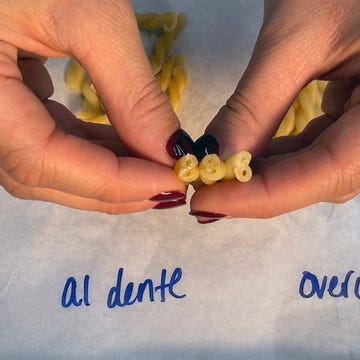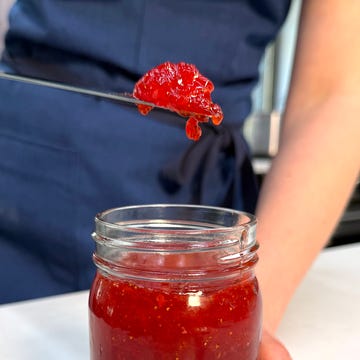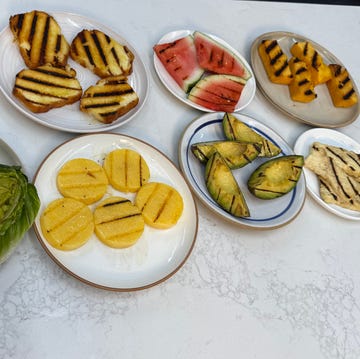Whether you’re having a picnic, eating cake at a birthday party, or ordering takeout, there’s a solid chance you have a plastic fork in hand. Disposable utensils are everywhere and are often preferred as the most convenient cutlery option. But it’s also one of the most controversial options.
Across America, nearly 100 million plastic utensils are thrown away every day. They’re typically too small to be caught by recycling machines or made with non-recyclable mixed plastics. Instead, the vast majority of them end up in landfills, incinerators, and in our ecosystems. The Ocean Conservancy reports that plastic utensils are among the most deadly physical pollutants to marine wildlife.
Most of us are already aware of the environmental impact of single-use plastic utensils. But, as research emerges about the pervasive presence of microplastics, experts and consumers alike are learning about how plastic cutlery also impacts our own health.
How many microplastics can be found in plastic utensils? And just how harmful can they be? We consulted experts to unpack everything you need to know so you can make more informed choices about how you eat your food.
Do Plastic Utensils Contain Microplastics?
The short answer: yes, a lot of them. Single-use plastic utensils are typically petroleum-based, which means they break down and release microplastics (a.k.a. any plastic fragment smaller than 5 millimeters). These fragments become smaller over time, but they never go away. Instead, they end up in our water supply, food, common household products, and our bodies.
Research suggests that anywhere from 10 to 40 million metric tons of microplastics are released into the environment annually—and that number is estimated to double by 2040. One of the biggest sources? Plastic utensils.
When you eat with plastic cutlery, they shed small particles of microplastics—no matter how careful you are. Microplastics are released when plastic materials are used and exposed to heat. Because of the very nature of plastic utensils, each fork and spoon releases a significant amount of particles—which often end up directly in our mouths.
"Previous studies have shown that using single-use disposable cutlery sheds hundreds of microplastics every time," says London-based physician Dr. Nicholas Dragolea of My Longevity Centre.
The volume of microplastics that end up in our bodies also depends on the food we're eating. "Higher temperatures in food can increase microplastic shedding," says Dr. Bryan Quoc Le, food scientist and author of 150 Food Science Questions Answered. "Additionally, the presence of oil, salt, and acid can increase the probability of microplastics flaking off of cutlery."
How Do Microplastics Affect Our Health?
Scientific research on microplastics is still relatively new, so the full extent of their impact on our health is not yet fully understood. But what we know for sure is that our bodies contain large amounts of particles. Experts estimate that adults ingest the equivalent of a credit card's worth of plastic every week. They also suggest that the average human brain may contain a plastic spoon's worth of microplastics.
How does this affect our health? "Consumption of microplastics can increase inflammation in regions of the body where microplastics are lodged," Le says. As this inflammation builds, you develop a higher risk of certain health conditions.
"Studies show that microplastics could pose a big problem to the reproductive system, including a decrease in fertility, and an increase in gut and respiratory system inflammation, which could lead to an increased risk of colon and lung cancer," Dr. Dragolea says. "Microplastics are also thought to interfere with plaque formation in blood vessels, which could cause an increase in stroke and heart attack risk."
Beyond that, there is also a correlation between high levels of microplastics in the brain and dementia. Naturally, you don't want these fragments in your body—but consumers can’t necessarily protect themselves by just opting for reusable silverware. Microplastics are in the air, in our water, and in everyday objects like clothing, mattresses, and tires. To put it plainly, they’re inescapable.
How Can You Minimize Microplastic Consumption?
Although living a microplastic-free life is nearly impossible, you can minimize your exposure. And forgoing petroleum-based disposable utensils is certainly a good place to start. The best solution is to reach for real silverware, which not only minimizes microplastic consumption but also prevents another product from ending up in a landfill.
But if bringing your own cutlery isn't an option, you can instead choose disposable utensils that don't release microplastics into your body. "One rule I always advise to my patients is to go for untreated wooden cutlery if there’s a choice," Dr. Dragolea says. "This is usually plastic-free."
Brands like Repurpose sell disposable utensils made from Polylactic Acid (PLA), which is derived from renewable resources such as corn and cassava. According to Repurpose, these compostable alternatives are non-toxic, heat-resistant, and fully biodegradable. The material doesn't completely protect you from microplastics, but Le says it produces some of the least microplastics compared to other plastics.
If you don't have the ability to choose your own disposable utensils, it's at least worth knowing which ones to avoid. "Cutlery made of high-density polyethylene, polypropylene, polystyrene, and polyamide produces a large proportion of microplastics," Le says.
Dr. Dragolea also offers a helpful rule of thumb: "The flimsier the plastic cutlery, the more microplastic it will shed if it’s flexed, scratched, or used for hot food." If you can easily bend a plastic utensil or if it develops white creases when you squeeze or bend it, you should probably opt for an alternative.



















